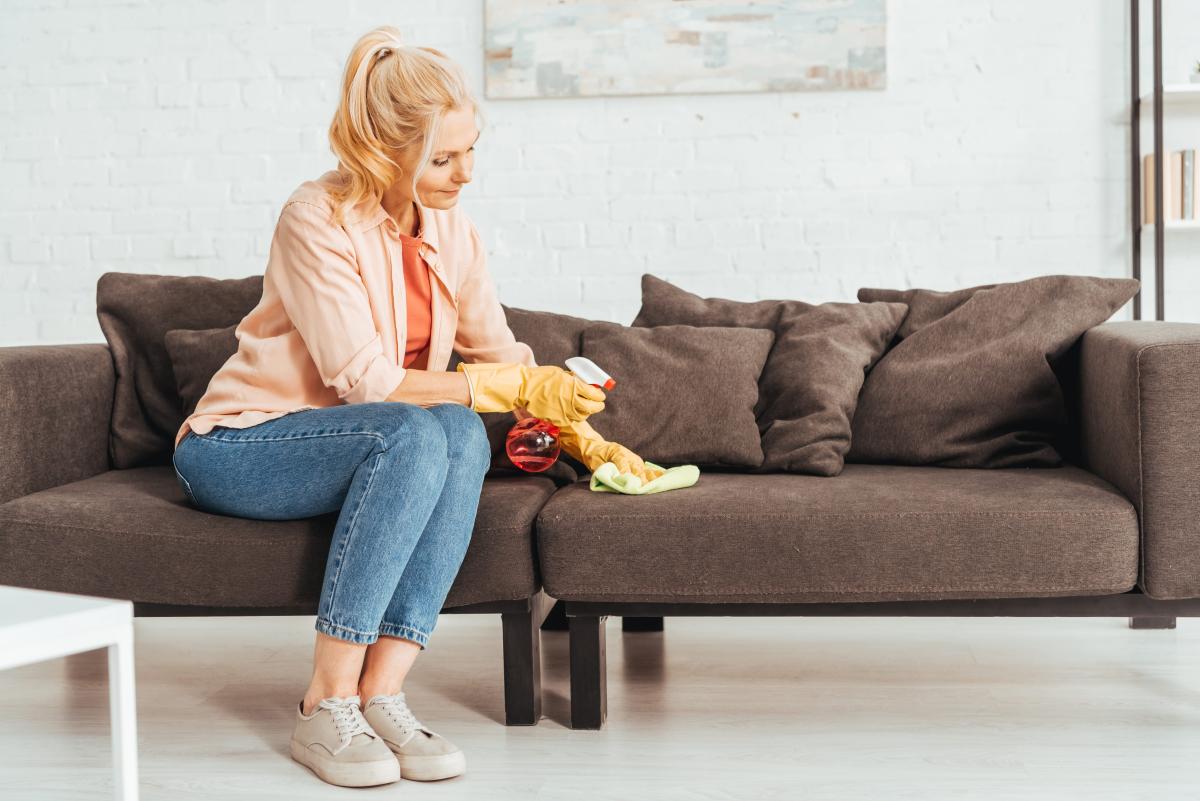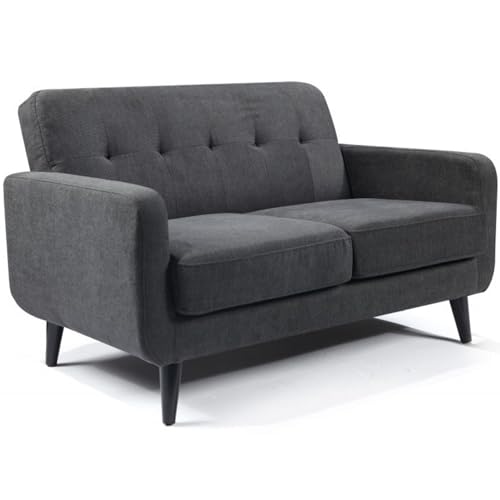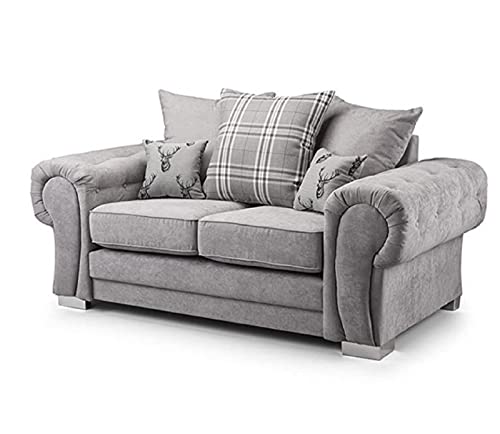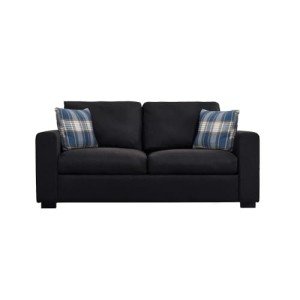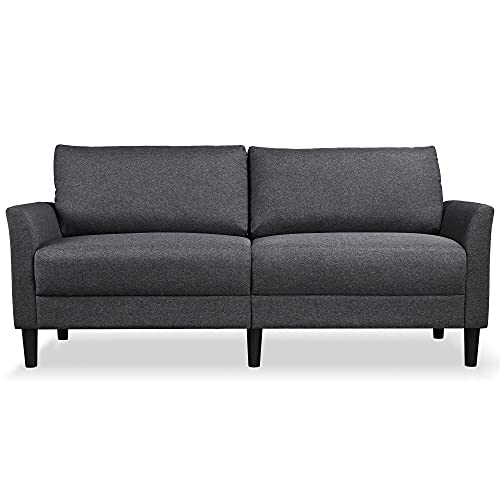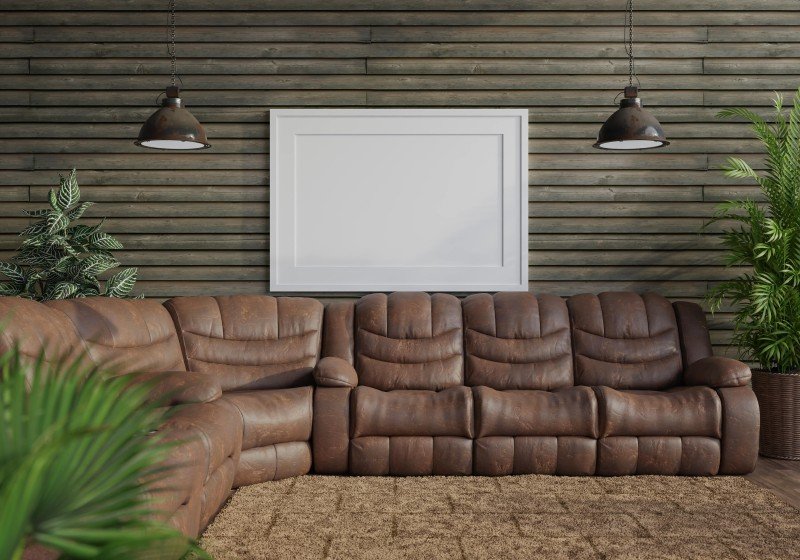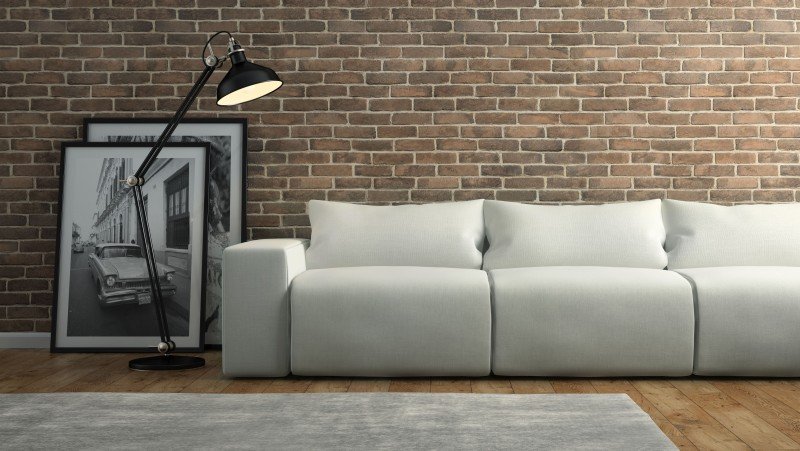Fabric sofas are a cozy and stylish addition to any living room, but they can easily accumulate dirt, stains, and odors over time. Cleaning a fabric sofa may seem like a daunting task, but with the right tools and techniques, you can keep your sofa looking fresh and inviting. In this comprehensive guide, you will learn everything you need to know about how to clean fabric sofas effectively and efficiently.
Understanding Your Fabric Sofa
Before you begin cleaning your fabric sofa, it's essential to understand the type of fabric it is made of. Different types of fabric require different cleaning methods to avoid damaging the material. Common types of fabric used in sofas include:
- Cotton: Soft and durable, but prone to wrinkling.
- Linen: Strong and breathable, but can be easily stained.
- Polyester: Resistant to wrinkling and fading, but can attract dust.
- Microfiber: Stain-resistant and easy to clean, but can be damaged by certain cleaning products.
- Velvet: Luxurious and soft, but requires delicate cleaning methods. Check the manufacturer's label on your sofa to determine the type of fabric and any specific cleaning instructions. If the label is missing or unclear, it's best to err on the side of caution and use gentle cleaning methods to avoid damaging the fabric.
Materials Needed to Clean Fabric Sofas
Gathering the right materials before you start cleaning your fabric sofa will make the process smoother and more effective. Here are the essential items you will need:
- Vacuum cleaner with upholstery attachment
- Soft-bristled brush
- White vinegar
- Liquid dish soap
- Clean white cloths
- Spray bottle
- Baking soda
- Steam cleaner (optional)
- Lint roller
- Rubbing alcohol (for stubborn stains) Having these materials on hand will ensure that you can tackle any dirt, stains, or odors on your fabric sofa effectively.
Pre-Cleaning Preparation
Before you dive into cleaning your fabric sofa, there are a few preparatory steps you should take to make the cleaning process more efficient:
- Remove cushions and pillows: Take off any removable cushions and pillows from the sofa to access all areas that need cleaning.
- Check for stains: Inspect the sofa for any visible stains or spills that need special attention during the cleaning process.
- Test cleaning products: Before using any cleaning products on your fabric sofa, test them on a small, inconspicuous area to ensure they do not cause discoloration or damage.
- Read the manufacturer's instructions: If your sofa came with a care manual, review it to see if there are specific cleaning recommendations you should follow.
- Ventilate the area: Ensure good ventilation in the room where you will be cleaning your sofa to help with drying and prevent the buildup of fumes from cleaning products. These simple preparation steps will set you up for success when cleaning your fabric sofa and help you avoid any costly mistakes.
Vacuuming Your Fabric Sofa
Vacuuming your fabric sofa is an essential first step in the cleaning process, as it helps remove surface dirt, dust, and debris. Follow these steps to vacuum your sofa effectively:
- Use the upholstery attachment: Attach the upholstery brush to your vacuum cleaner to avoid damaging the fabric.
- Vacuum the cushions: Start by vacuuming the cushions, using gentle strokes to remove any dirt or crumbs.
- Vacuum the frame: Move on to vacuuming the sofa frame, including the arms, back, and sides, paying attention to crevices where dirt can accumulate.
- Vacuum under the cushions: Lift up the seat cushions and vacuum underneath to remove any hidden debris.
- Lint roll the fabric: For any stubborn pet hair or lint, use a lint roller to pick up the debris. Vacuuming your fabric sofa regularly, at least once a week, will help prevent dirt and dust from settling into the fabric and keep your sofa looking clean and fresh.
Spot-Cleaning Stains
Accidents happen, and stains on your fabric sofa are inevitable. Spot cleaning stains as soon as they occur can help prevent them from setting and becoming more challenging to remove. Here's how to spot-clean stains on your fabric sofa:
- Blot the stain: Use a clean white cloth to blot up as much of the spill as possible without spreading it further.
- Prepare a cleaning solution: Mix a solution of 1 tablespoon of liquid dish soap and 2 cups of warm water in a spray bottle.
- Test the solution: Spray a small amount of the cleaning solution on a hidden area of the fabric to check for any adverse reactions.
- Apply the solution: Spray the cleaning solution directly onto the stain and gently blot it with a clean cloth. Avoid rubbing, as this can damage the fabric.
- Rinse the area: Dampen a clean cloth with water and blot the area to remove the cleaning solution.
- Air-dry the fabric: Allow the fabric to air-dry completely before using the sofa again. For stubborn stains that do not respond to the above method, you can try using a mixture of white vinegar and water or rubbing alcohol to break down the stain. Always test these solutions in an inconspicuous area first to ensure they do not cause damage to the fabric.
Deep Cleaning Your Fabric Sofa
In addition to regular vacuuming and spot-cleaning, deep cleaning your fabric sofa every 6-12 months will help remove built-up dirt, stains, and odors. Here's how to deep clean your fabric sofa effectively:
- Remove cushions and pillows: Take off all removable cushions and pillows from the sofa.
- Vacuum the sofa: Begin by vacuuming the entire sofa, including the cushions, to remove surface dirt and debris.
- Pre-treat stains: Spot-clean any visible stains using the methods mentioned earlier before proceeding with deep cleaning.
- Steam clean the fabric: If your sofa's care instructions allow, use a steam cleaner with an upholstery attachment to deep clean the fabric. Follow the manufacturer's instructions for best results.
- Alternatively, use a cleaning solution: If you do not have a steam cleaner, you can mix water with a small amount of mild detergent or white vinegar to create a cleaning solution. Dip a clean cloth into the solution, wring out excess liquid, and gently scrub the fabric in circular motions.
- Rinse the fabric: Dampen a clean cloth with water and wipe down the fabric to remove any residual cleaning solution.
- Dry the sofa: Allow the sofa to air dry completely before replacing the cushions and pillows. Deep cleaning your fabric sofa on a regular basis will not only keep it looking clean and fresh but also prolong its lifespan.
Drying Your Fabric Sofa
Properly drying your fabric sofa after cleaning is essential to prevent mold and mildew growth. Follow these steps to ensure your sofa dries effectively:
- Air-dry the fabric: After cleaning, open windows or turn on fans to improve air circulation and speed up the drying process.
- Blot excess moisture: If the fabric is damp after cleaning, use clean white towels to blot up excess moisture. Avoid rubbing, as this can damage the fabric.
- Use a hairdryer: For faster drying, you can use a hairdryer on a low, cool setting to blow-dry the fabric. Keep the hairdryer moving to prevent overheating. It's crucial to allow your fabric sofa to dry completely before using it again to prevent the growth of mold and mildew.
Deodorizing Your Fabric Sofa
Over time, fabric sofas can absorb odors from pets, food, and smoke, leaving them smelling less than fresh. Deodorizing your fabric sofa regularly can help eliminate odors and keep your living room smelling clean. Here are some effective deodorizing methods:
- Baking soda: Sprinkle a thin layer of baking soda over the fabric and let it sit for several hours or overnight to absorb odors. Vacuum the baking soda the next day to remove it.
- White vinegar: Fill a spray bottle with a mixture of white vinegar and water and lightly mist the fabric. The vinegar will help neutralize odors without leaving a strong scent.
- Essential oils: Add a few drops of your favorite essential oil, such as lavender or tea tree oil, to a spray bottle filled with water and spritz the fabric for a fresh scent.
- Fabric freshener: Use a commercial fabric freshener designed for upholstery to quickly refresh your sofa between cleanings. Regularly deodorizing your fabric sofa will help maintain a pleasant and inviting atmosphere in your living space.
Preventing Future Stains
Once you've cleaned your fabric sofa to perfection, you'll want to take steps to prevent future stains and keep it looking pristine. Here are some tips for maintaining the cleanliness of your fabric sofa:
- Use fabric protection: Apply a fabric protector spray to your sofa to guard against spills and stains. Be sure to test the spray on a small area first to check for any discoloration.
- Establish no-food zones: Avoid eating or drinking on the sofa to prevent accidental spills that can lead to stains.
- Keep pets off the sofa: If possible, establish a no-pets rule for the sofa to prevent pet hair, dander, and odors from accumulating.
- Rotate cushions: Regularly rotate and flip seat cushions to ensure even wear and prevent them from becoming misshapen.
- Clean up spills immediately: Promptly blot up any spills or stains as soon as they occur to prevent them from setting into the fabric. By following these preventive measures, you can prolong the cleanliness and lifespan of your fabric sofa and enjoy its comfort and beauty for years to come.
FAQs
1. How often should I clean my fabric sofa?
It is recommended to vacuum your fabric sofa at least once a week to remove surface dirt and dust. Deep cleaning your sofa should be done every 6-12 months to remove built-up stains and odors.
2. Can I use bleach to clean my fabric sofa?
No, bleach is too harsh for most fabric sofas and can cause discoloration and damage. It's best to use gentle cleaning solutions like white vinegar or mild detergent for fabric sofas.
3. What should I do if my fabric sofa has a musty odor?
To remove musty odors from your fabric sofa, sprinkle baking soda over the fabric and let it sit for several hours or overnight. Vacuum the baking soda the next day to eliminate the odor.
4. How can I protect my fabric sofa from pet stains?
To protect your fabric sofa from pet stains, consider using a fabric protector spray designed for upholstery. It will create a barrier against spills and accidents, making cleanup easier.
5. Can I steam clean my fabric sofa at home?
Yes, you can use a steam cleaner with an upholstery attachment to deep clean your fabric sofa at home. Follow the manufacturer's instructions for best results and ensure adequate ventilation during the process.
6. Is it safe to use essential oils to deodorize my fabric sofa?
Yes, essential oils can be a natural and safe way to deodorize your fabric sofa. Dilute a few drops of essential oil in water and spray it lightly over the fabric for a fresh scent.
Cleaning your fabric sofa doesn't have to be a daunting task with the right tools and techniques at your disposal. By following the comprehensive guide on how to clean fabric sofas provided here, you can keep your sofa looking fresh, clean, and inviting for years to come. Remember to vacuum regularly, spot-clean stains promptly, deep clean periodically, and take preventive measures to maintain the cleanliness of your fabric sofa. With a little effort and attention to detail, you can enjoy a beautifully clean and comfortable sofa in your living room.
